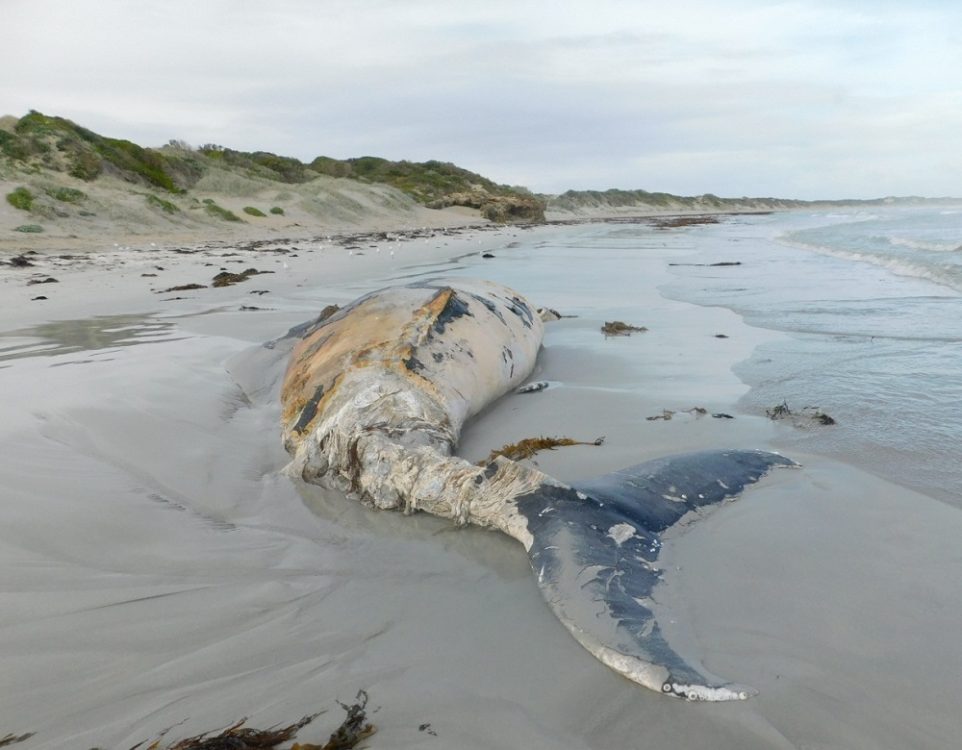Winter is whale season in southern Australia
Late autumn sees whales returning to Australian waters to breed after spending the summer months in the Antarctic feeding grounds. The most commonly seen whales in our region are humpback and southern right whales, as well as blue whales (see this month’s post for some blue whale news) with orcas occasionally spotted too. Last week a small pod of whales, believed to be humpbacks, caused excitement at Beachport where visitors were able to see them right next to the jetty! You can see footage of the encounter shot by a tourist here.
South East residents have recently been able to have a different kind of up close whale experience, with two juvenile whale carcasses washing up on local beaches in the past few weeks. First, a 12 metre whale, believed to be a fin or sei whale, washed up at Cape Douglas (read the ABC news article here), followed about a week later by a young humpback whale at Nora Creina. I couldn’t let the chance go by to check out these massive marine animals, so I rugged up and headed out with my camera. Both whales were fairly intact and barely smelly at all when I saw them (really!).
One the one hand the deaths of these creatures may be viewed as a sad occurrence, but my encounters with these whales reminded me that in nature everything is connected, from the barnacles growing on their bodies, to the carcasses now becoming food for other marine creatures. (And while the cause of death is unknown in these cases, there were a number of reports in the global media in 2019 of dead whales containing 40-100 kilograms of plastic in their stomachs… further reminder that humans and our decisions deeply affect the entire natural world).




